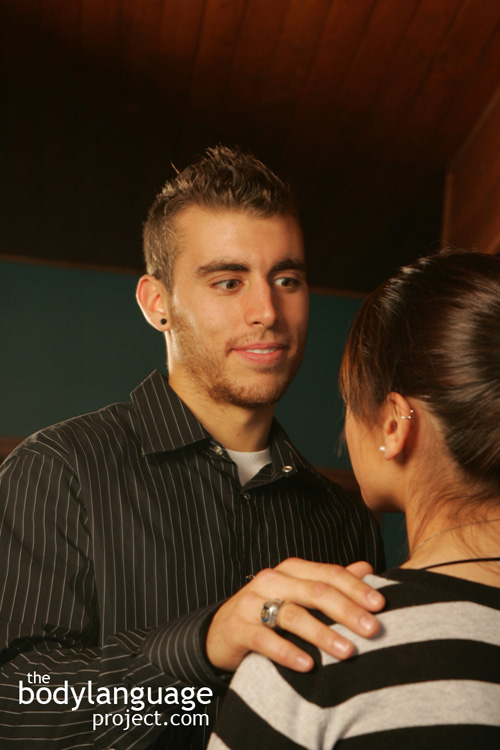Most sexual signals a woman imparts has some component that is rooted in appearing submissive. A very large part of dating involves relinquishing power to our partners and most often it is the woman who allows herself to be dominated by men, rather than the other way around. You might think that it untrue, that women today share equally or tend to “wear the pants in the household”, and that feminism has equalized the sexes, but if you take the act of sex by itself, absent of whatever else happens in the couple’s dynamic, it is plainly obvious that men dominate the act. Sex, is done by penetrating the women’s vagina with the man’s penis. The very act alone requires her to submit to him, and relationships are no different. Now I do understand that women control the household, some even control the finances, but women still hold and give birth to children and the brain is still hardwired to prefer a dominant man who can assist in raising that child. These points, and not withstanding the myriad of variations with respect to dominance and how it fits into relationships male dominance still holds true for the “norm” – for the average. There’d be no point in talking specifically to couples that use sex in more creative ways that what the human body is naturally equipped for, or couples where women seek the upper hand and wish to be in control at all times, for the exact reason that it is a huge minority. Almost universally, women prefer men who are larger and more dominant in relation to themselves. When women select their mates the seek men who they can respect, and part of this is directly related to his status. When women, and men for that matter, lack respect for their partner, it has a directly influences on their level of happiness and the amount of conflict they endure in their relationships.

The “hands on hips” or hands “akimbo” make men appear larger and more dominant and therefore more sexually attractive.
Body size differences between the sexes are a good indicator of how we come together. The average man is universally larger and more muscular than the average woman, which gives us predictive powers of how men and women come together. Nearly in all cases, women choose men who are larger and taller than them, and the research shows this. People are not alone in the sexual dichotomy, as many other species where the male is larger on average come together similarly. In a solid relationship each party is submitting to the needs and desires of the other, which naturally leads into a perpetual negotiation. However, during the initial stages of intimacy, it is the woman who is nearly universally required to submit for sexual intimacy to develop. It is my contention that men require women to submit through their ego and preference, and women crave it in order to set off a visceral response that eventually produces within them a desire to have sex or submit. If men and women can’t get over this initial stage of negotiation, no long term relationship will follow and no partnership, equal or unequal will follow. Therefore, accept it or not, men prefer women that show submissive postures, and as mentioned, I believe that women if allowed to, actually enjoy the submissive process, no matter how archaic it sounds. In other words, there’s nothing sexier to a women than “being swept her off her feet.”
Some of the most common ways to display submissively includes turning the toes in called pigeon toes or “tibial torsion”, shoulder shrugs, exposing the neck or wrists, head tilt, smiling, the forehead bow and childlike playfulness. The second class of signals relates to making a women appear sexier and playing up her sexual aspects. Some of those signals include tossing the hair, tilting the pelvis, the parade, the room encompassing glance, grooming and preening, the leg twine (where the legs are tightly pressed together) and leg crossing, hiking the skirt and or dressing provocatively. The third way to indicate interest are proximity related such as moving closer, pointing and eye contact which is figurative closeness, touching and crossing the legs toward rather than away. The remaining signals are rapport building and are the ones we find most obvious, although as they relate to interest, aren’t as significant. These signals include verbal contact and are less significant because by this time we usually know things are going well, and that interest is present. Echoing and mirroring is also part of sexual body language and is known within this category as “the nonverbal mating dance.” Now that we have cues in loose categories, we can look at them in more detail.




